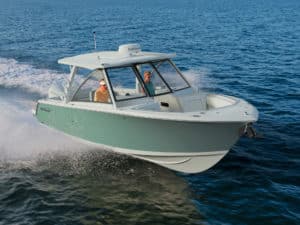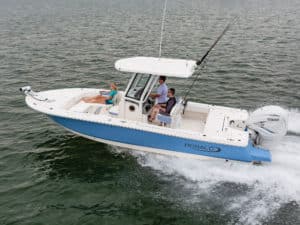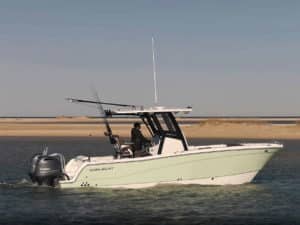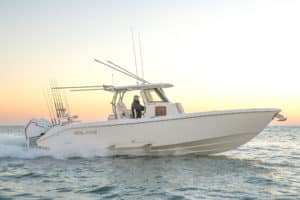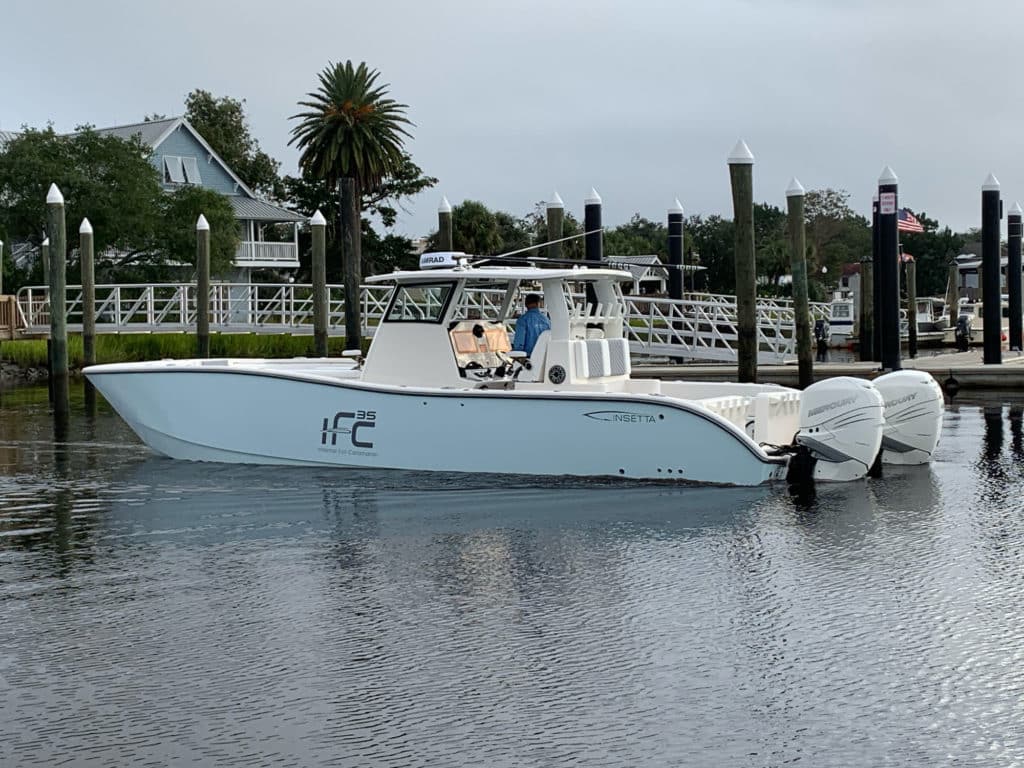
As Jeffrey Spangler trailered the Insetta 35 IFC (internal foil catamaran) to the boat ramp in St. Marys, Georgia, this new multihull immediately impressed me with its luxurious lines. In fact, all nearby heads turned.
That’s not the traditional reaction most people have toward catamaran fish boats. But this one represents a new standard.
The second feature I noticed: The outboards mount so that the powerheads tilt inward, toward each other. That canted position ensures that the propellers find enough water to maximize thrust and flow efficiency.
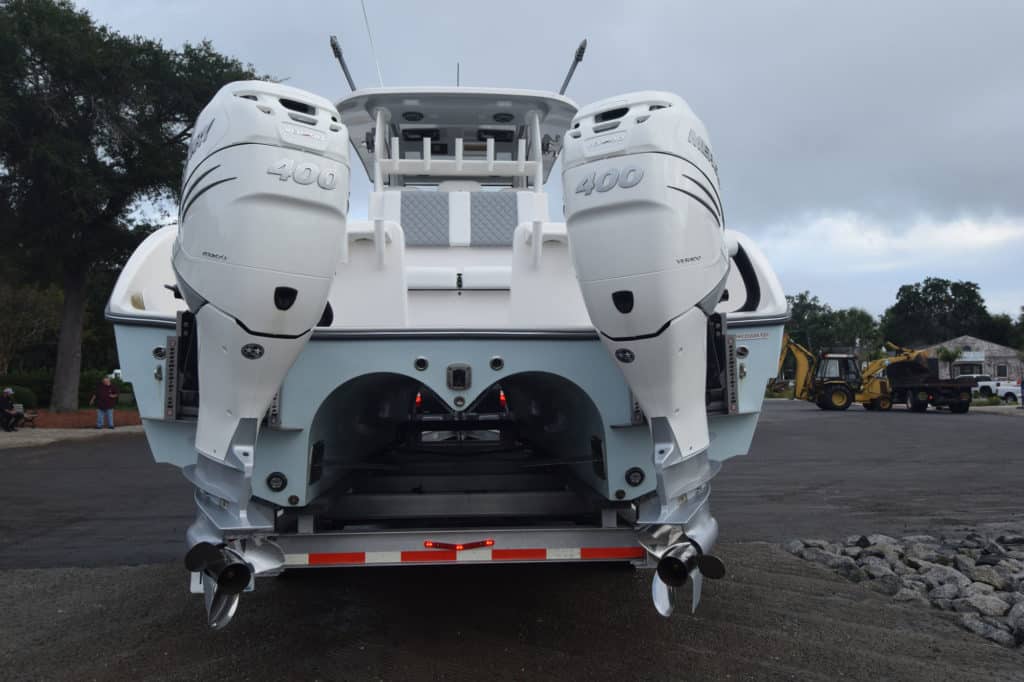
But the real show stopper on this model can’t readily be seen at a glance. A hydrofoil lies between this cat’s asymmetrical sponsons.
While hydrofoils aren’t new, they’ve been rare, particularly among fishing boats. Crafted correctly, foils can improve fuel economy 30 to 40 percent. Rob Coffey, Insetta’s director of sales and marketing, says the company wanted the 35 IFC to deliver optimal cruise speed and range, which results in less wear and tear on the engines and less fuel burned.
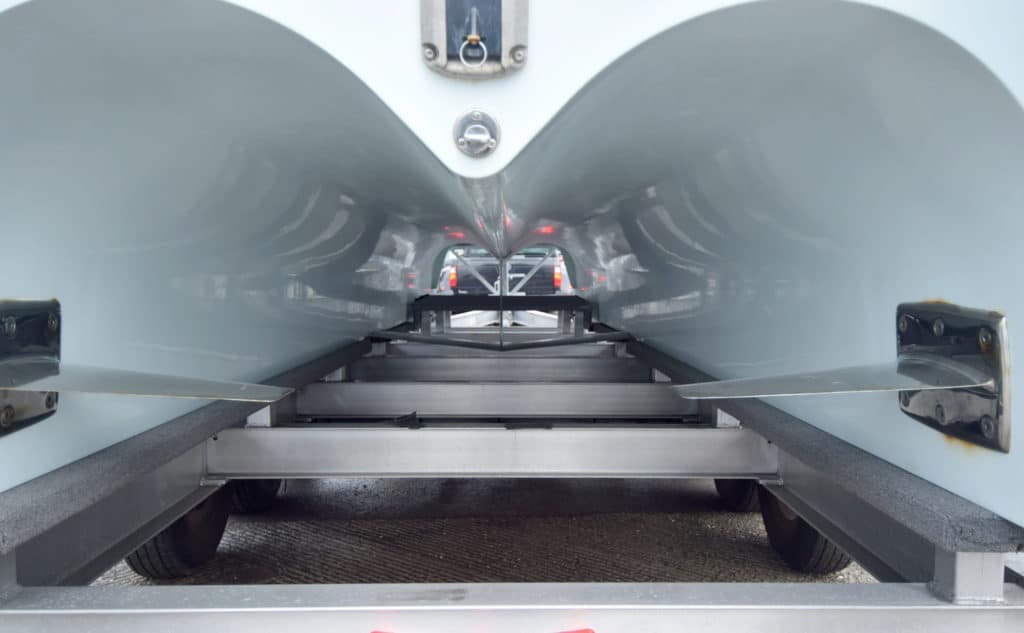
The foil, made from stainless steel, looks like a pair of airplane wings connected by a central strut. The foil’s backing plates are integral to the hull itself. Two smaller stainless-steel fins are placed aft of the foil inside each sponson.
On the Water
The late October winds cranked to 15 knots as we cruised out of St. Marys toward the ocean. Spangler and I were joined by production manager Joel Shine. I quickly walked around the deck, noting top standard fishing features.
- 156-gallon insulated coffin box
- Eight bow rod holders (with more aft)
- Twin 30-gallon transom livewells (with an option for a third 70-gallon well beneath the mezzanine seat)
- Three-pump-capacity sea chest
- Fold-down bait-prep station and tackle storage
- Transom bulkhead rocket launchers
- Optional Gemlux outriggers
We had no time to fish on this trip, but clearly the 35 IFC carries all the offshore necessities and niceties an angler could want.
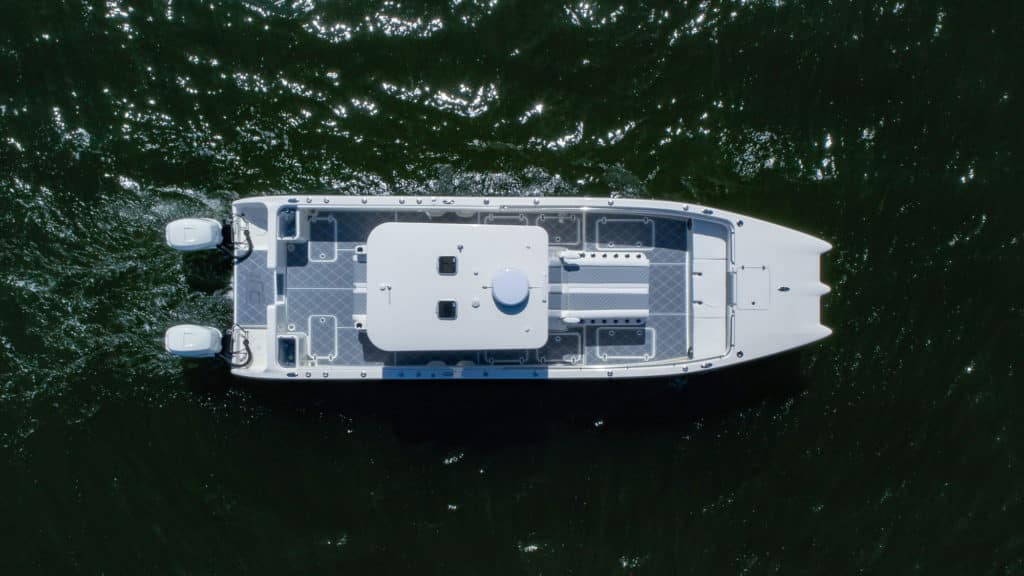
Shine took the helm while I prepared to gather performance numbers. “As we lift (with the foil), we reduce drag and increase speed,” he said. To prove that point, he accelerated to 35 mph and took his hand off the throttle. The cat kept lifting and gaining speed and rpm until we reached 45. As the foil lifted the boat, I could see the line of spray from the hull move farther aft.
With stiff wind and current, we made each run in opposing directions, and I averaged the speeds and times. With the twin Mercury 400 Verados, we planed in about 6 seconds, reached 30 mph in 12.75 seconds, and topped out at 58.8 mph. I found an efficient cruise at 47.3 mph, achieving 1.73 mpg.
Read Next: Multihull, Catamaran Boats Invade the Offshore-Fishing Market
Most hydrofoil-assist boats peak near the 60 mph point because cavitation begins along the foil’s wings. But most anglers rarely, if ever, run their boats at top speed, particularly in any kind of sea. The efficiency and economy of the foil design generally trumps top end.
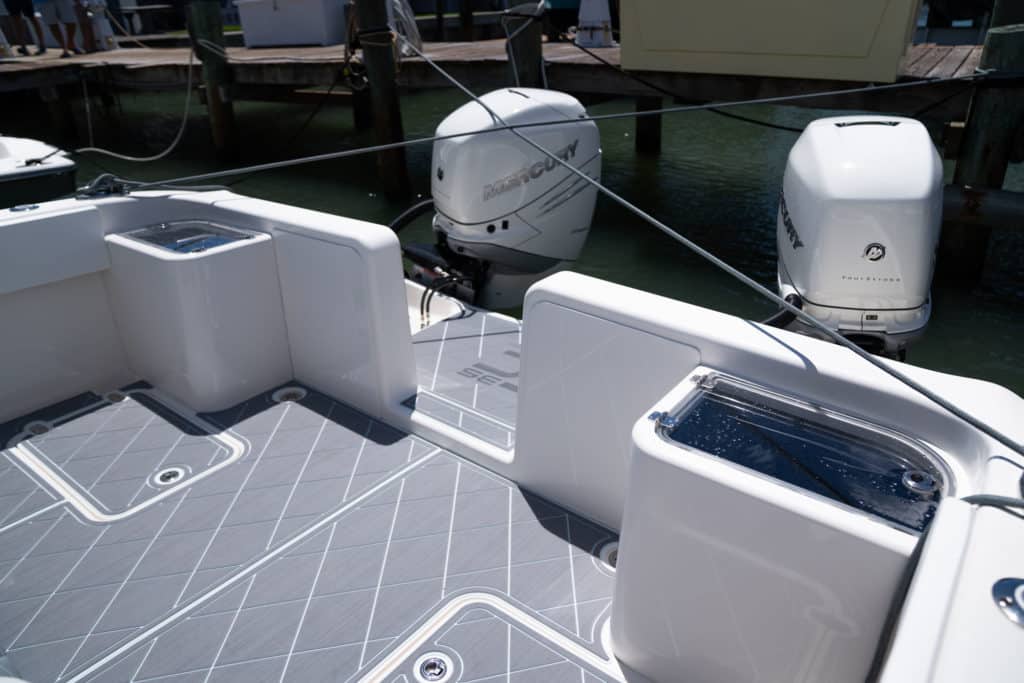
Hull Difference
As we crossed the broad sound, the chop began to build. Offshore, the messy 3- to 4-footers had me bracing for solid impacts. But that never happened. The foil acted as a dampener, and the twin-hull design gave this 35 a comfortable ride. I could easily stand next to the three-across helm seat as we cruised toward the channel buoys.
On a drift, the 10-foot-8-inch beam of the 35, which carries throughout the length of the hull, makes this one stable vessel. However, as with all cats, the aft freeboard is high, meaning it’s quite a stretch to reach to the water.
Heading home, I took the helm and realized I needed to stand on the footrest to see over the console. Granted, I’m about the smallest captain to pilot this boat, and Shine says the helm elevation of these bespoke cats can be adjusted for the customer’s height.
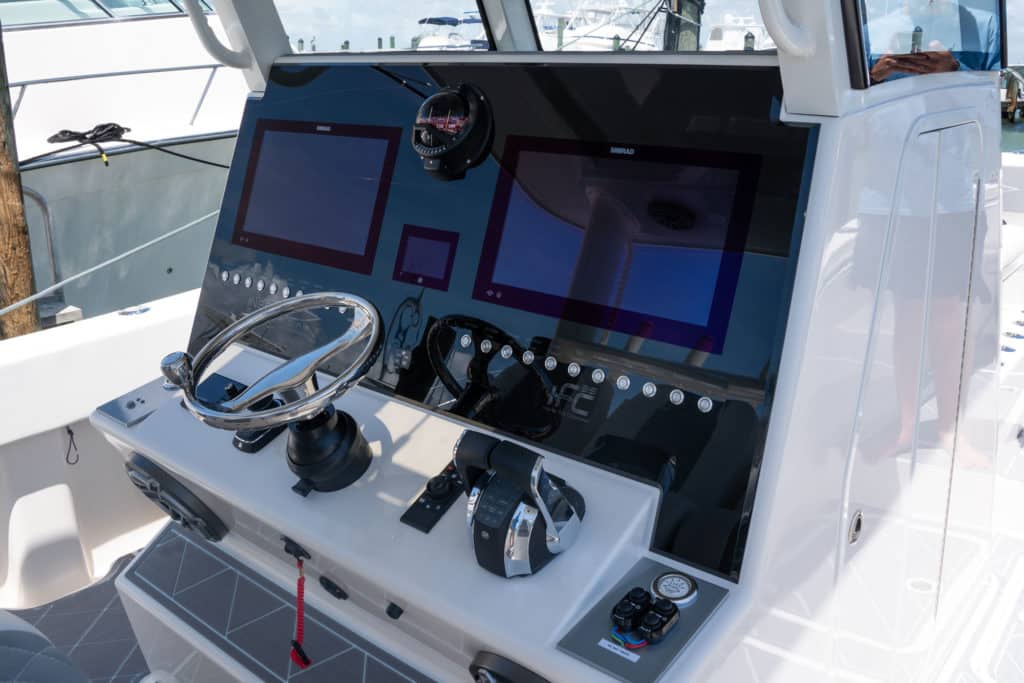
As we ran downsea, the boat handled easily. I was pleasantly surprised at the lack of bow sneeze; the lift from the foil kept us skimming the wave tops. And due to the canted engines and asymmetrical hull, among other design features, this cat turned like a monohull—leaning inward rather than outward.
I asked Shine about any issues the foil might encounter if the boat should hit a submerged object or run aground. He reminded me that the foils are made from steel, and that they’re internal to the tunnel. At their lowest point, they’re a tiny bit lower than the hulls and higher than the props.
Quite obviously, the Insetta 35 IFC demonstrates a new approach to multihull construction and another step in the evolution of catamaran fish boats. That kind of innovation makes this vessel certainly worth a look.
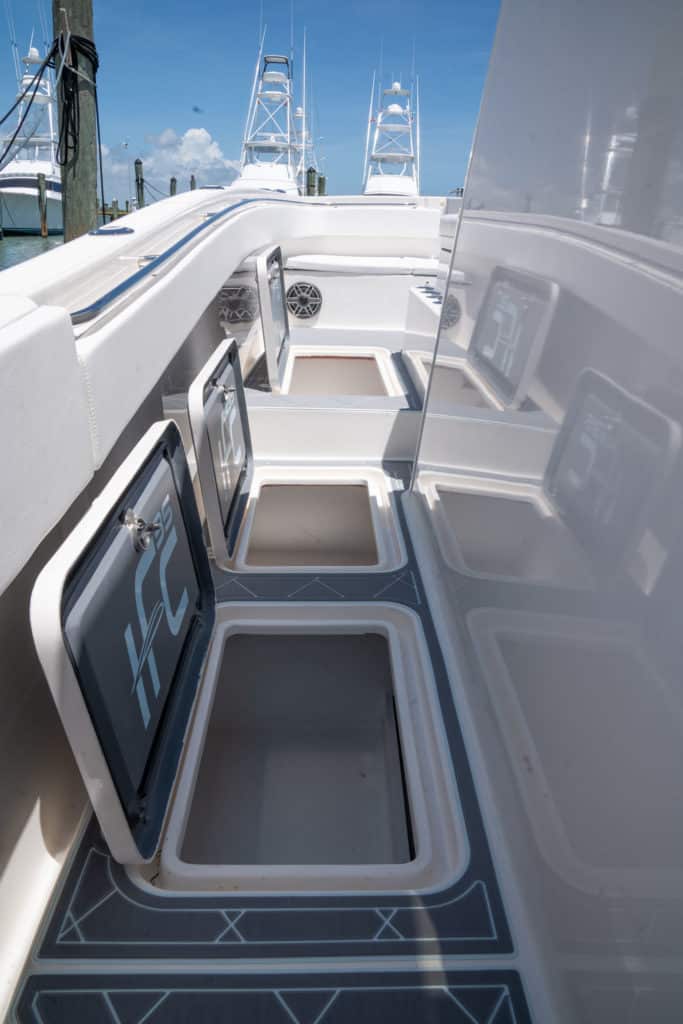
Hull Specs
LOA: 35 ft.
Beam: 10 ft. 8 in.
Transom Deadrise: N/A (cat)
Draft: 2 ft.
Dry Weight: 11,000 lb. (fully rigged w/ engines)
Fuel: 490 gal.
Max HP: 900 hp
Base Price: $379,995 (w/ twin Mercury 300 Verados)
Performance
Engines: Twin Mercury 400 Verados
Load: Three adults, 270 gal. fuel, safety gear
Time to 30 mph: 12.75 sec.
Top Speed: 58.8 mph 5,800 @rpm
Best MPG: 1.73 mpg @ 47.3 mph (4,400 rpm)
Insetta Boatworks, St. Marys, Georgia

